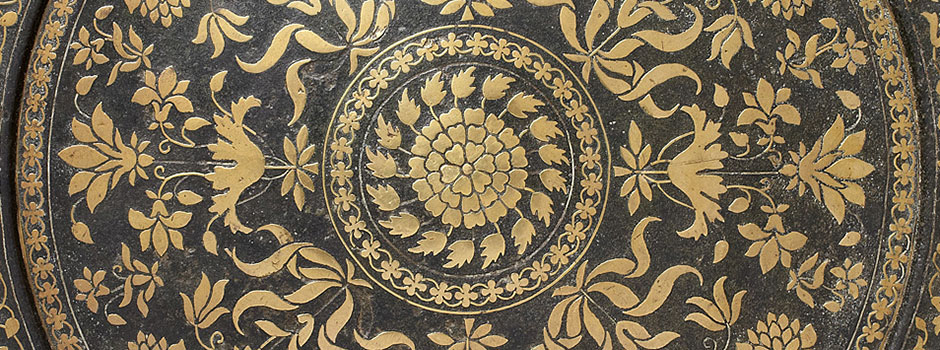
DAVID COLLECTION IN COPENHAGEN Flora Islamica - Plant Motifs In The Art Of Islam
May 29, 2013 FEATURE, Art Collection

 Ceramic bowl with luster decoration Iraq, 9th-10th century / Courtesy of The David Collection, Copenhagen
Ceramic bowl with luster decoration Iraq, 9th-10th century / Courtesy of The David Collection, Copenhagen
For more than a thousand years, trees, plants, and flowers were among the most prevalent motifs in the art of the Islamic world. Many of these works of art saw the light of day in hot, dry, barren regions, which might explain why the lushness of the Paradise described in the Qur'an and that of artificially irrigated earthly gardens was especially attractive to Muslim artists.
Classical Islamic art has been somewhat reluctant to depict living creatures and to work with figurative motifs, primarily for religious reasons. Over the ages, many artists have accordingly concentrated on more abstract or stylized elements, and floral and vegetal motifs provided a suitably neutral subject.
Art from the world of Islam exhibits an exuberant infatuation with decoration, used unreservedly and masterfully, and taking its subjects, especially from the great diversity of the plant kingdom. We find plants or ornamentation based on them on everything from mundane utility ware to the most costly luxury items from manuscripts to architectural details, jewellery, glass, ceramics, textiles, and weapons. One ornament, above all, has almost become synonymous with Islamic art: the arabesque.
Flora Islamica - Plant Motifs in the Art of Islam presents 66 pieces from the museum's Islamic Collection and one Persian work of art each from Rosenborg Castle and Designmuseum Danmark. The exhibition is organized as follows: The Heavenly and the Earthly Garden, Inspiration from Antiquity, Inspiration from China, Abstraction, The Arabesque, Fantasy, Naturalism, Plants as a Symbol, Flowers of the Gunpowder Empires.
 Ceramic dish with blue underglaze decoration, Iran; 2nd half of 15th century / Courtesy of The David Collection, Copenhagen
Ceramic dish with blue underglaze decoration, Iran; 2nd half of 15th century / Courtesy of The David Collection, Copenhagen
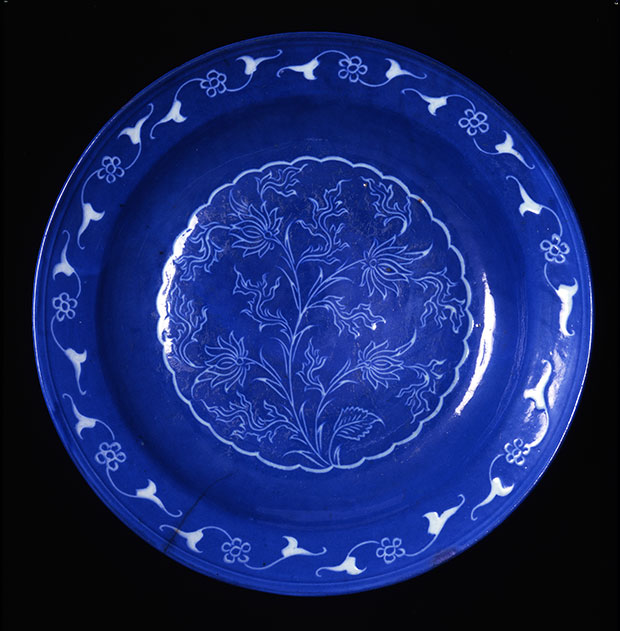 Ceramic dish with Chinese-inspired flower Iran, Kirman, 17th century / Courtesy of The David Collection, Copenhagen
Ceramic dish with Chinese-inspired flower Iran, Kirman, 17th century / Courtesy of The David Collection, Copenhagen
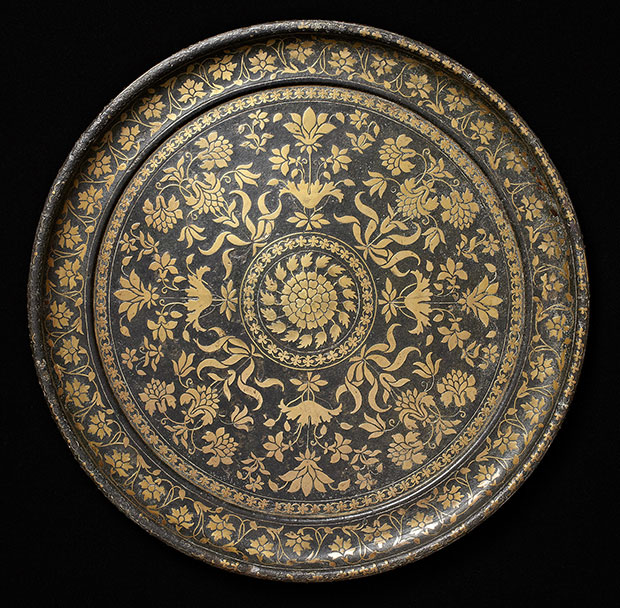 Dish of bidri metal with inlaid brass flowers India, Deccan, 2nd half of 17th century / / Courtesy of The David Collection, Copenhagen
Dish of bidri metal with inlaid brass flowers India, Deccan, 2nd half of 17th century / / Courtesy of The David Collection, Copenhagen
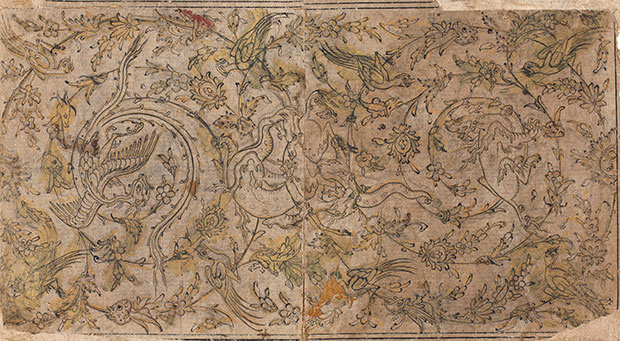 Inhabited scrollwork India, Mughal or Deccan, c. 1600 / Courtesy of The David Collection, Copenhagen
Inhabited scrollwork India, Mughal or Deccan, c. 1600 / Courtesy of The David Collection, Copenhagen
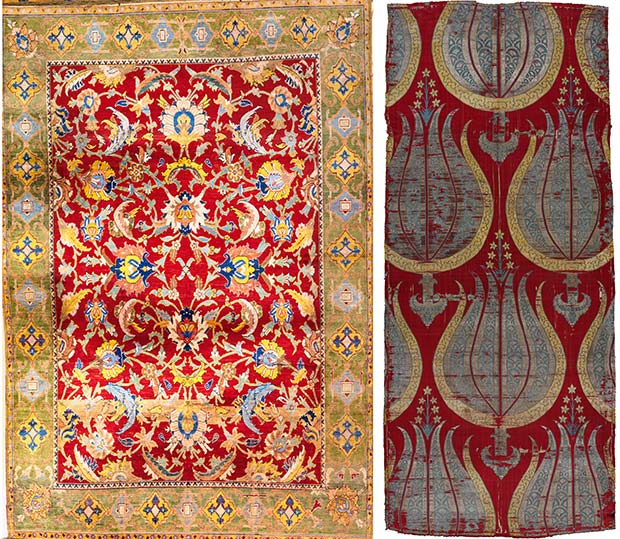 Left: Polonaise carpet with fanciful flowers Iran, Isfahan, c. 1650 / Right: Silk with stylized tulips Turkey, 2nd half of 16th century / Courtesy of The David Collection, Copenhagen
Left: Polonaise carpet with fanciful flowers Iran, Isfahan, c. 1650 / Right: Silk with stylized tulips Turkey, 2nd half of 16th century / Courtesy of The David Collection, Copenhagen
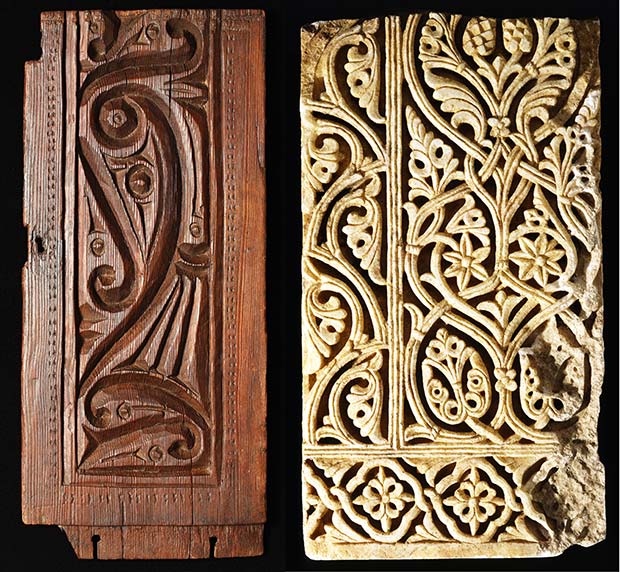 Left: Wooden panel with carved decoration Egypt, 10th century / Right: Marble relief Spain, Cordoba, 2nd half of 10th century / Courtesy of The David Collection, Copenhagen
Left: Wooden panel with carved decoration Egypt, 10th century / Right: Marble relief Spain, Cordoba, 2nd half of 10th century / Courtesy of The David Collection, Copenhagen
 Limestone matrix for stamping leather Iran or Afghanistan, c. 1200 / Courtesy of The David Collection, Copenhagen
Limestone matrix for stamping leather Iran or Afghanistan, c. 1200 / Courtesy of The David Collection, Copenhagen
 Two panels from a minbar Syria or Iraq, c. 1200 / Courtesy of The David Collection, Copenhagen
Two panels from a minbar Syria or Iraq, c. 1200 / Courtesy of The David Collection, Copenhagen
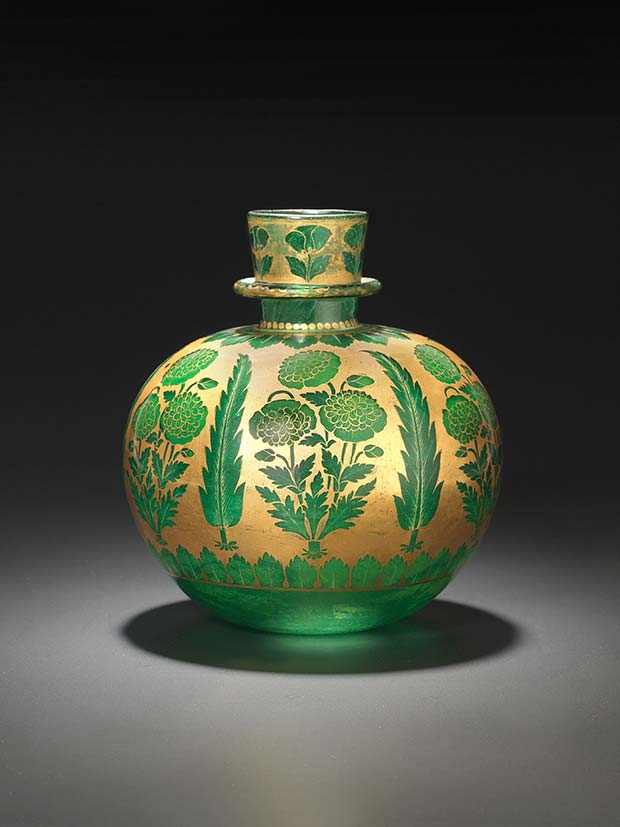 Water pipe (huqqa), green glass with poppies India, Mughal, beginning of 18th century / Courtesy of The David Collection, Copenhagen
Water pipe (huqqa), green glass with poppies India, Mughal, beginning of 18th century / Courtesy of The David Collection, Copenhagen
FLORA ISLAMICA is the David Collection's first contribution to the new joint effort - Parkmuseerne - together with the Filmhouse, the Hirschsprung Collection, Rosenborg Castle, the National Gallery of Denmark, and the Natural History Museum of Denmark. This museum quarter in and around Copenhagen's parks begins its collaboration with a number of exhibitions and other initiatives taking flowers as their common theme.
Comments
Jan 05, 2014 - 16:56:33
This exhibit , seen in summer 2013, was good, but everything about the David Museum is excellent - including its free admission! And for Danish paintings and ceramics as well as for its astounding and extensive Islamic collection and great display. The high point of my visit to Copenhagen.
May 29, 2013 - 11:33:25
This is an amazing exhibition.
Add a comment